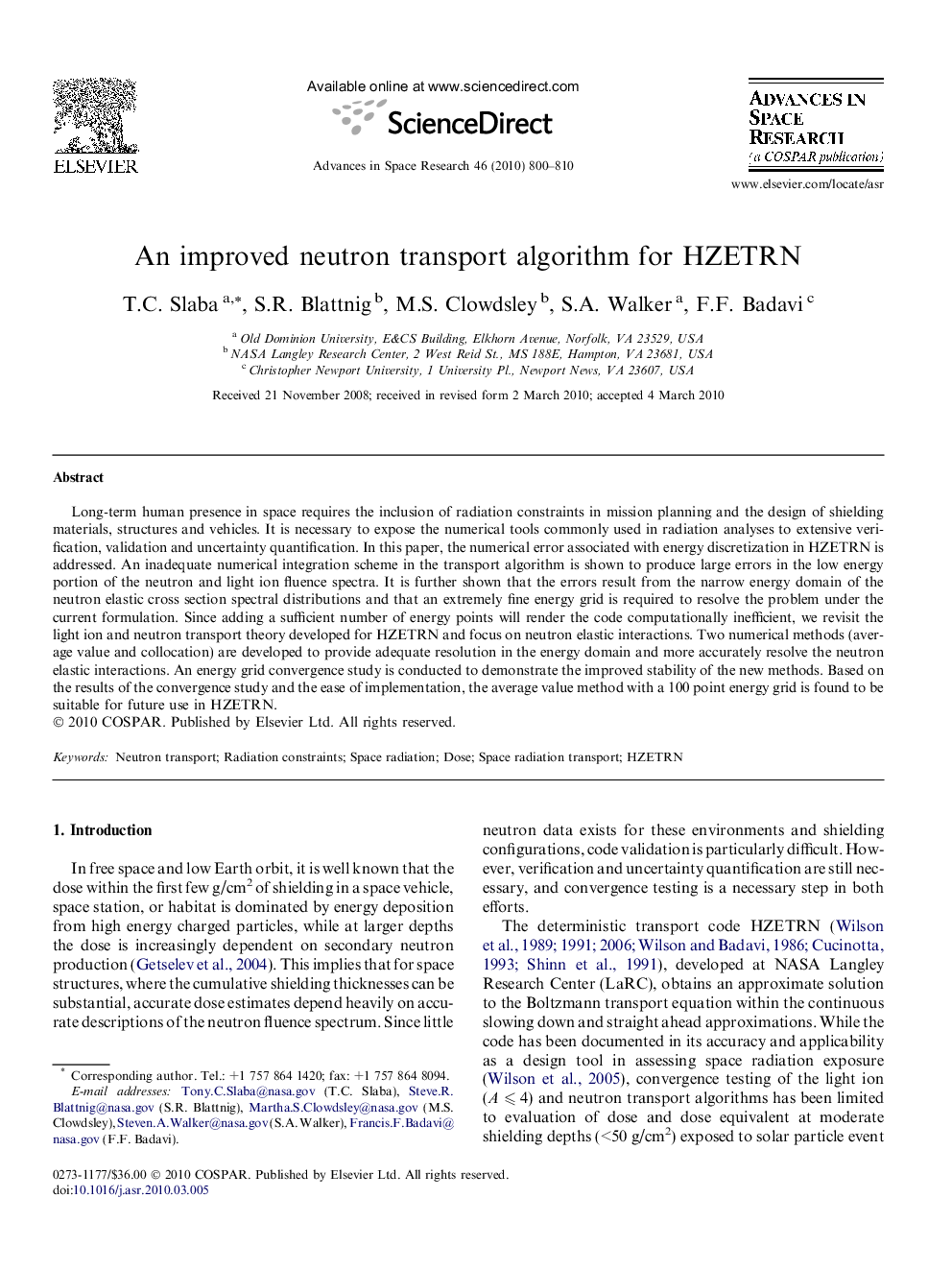| Article ID | Journal | Published Year | Pages | File Type |
|---|---|---|---|---|
| 1766200 | Advances in Space Research | 2010 | 11 Pages |
Long-term human presence in space requires the inclusion of radiation constraints in mission planning and the design of shielding materials, structures and vehicles. It is necessary to expose the numerical tools commonly used in radiation analyses to extensive verification, validation and uncertainty quantification. In this paper, the numerical error associated with energy discretization in HZETRN is addressed. An inadequate numerical integration scheme in the transport algorithm is shown to produce large errors in the low energy portion of the neutron and light ion fluence spectra. It is further shown that the errors result from the narrow energy domain of the neutron elastic cross section spectral distributions and that an extremely fine energy grid is required to resolve the problem under the current formulation. Since adding a sufficient number of energy points will render the code computationally inefficient, we revisit the light ion and neutron transport theory developed for HZETRN and focus on neutron elastic interactions. Two numerical methods (average value and collocation) are developed to provide adequate resolution in the energy domain and more accurately resolve the neutron elastic interactions. An energy grid convergence study is conducted to demonstrate the improved stability of the new methods. Based on the results of the convergence study and the ease of implementation, the average value method with a 100 point energy grid is found to be suitable for future use in HZETRN.
